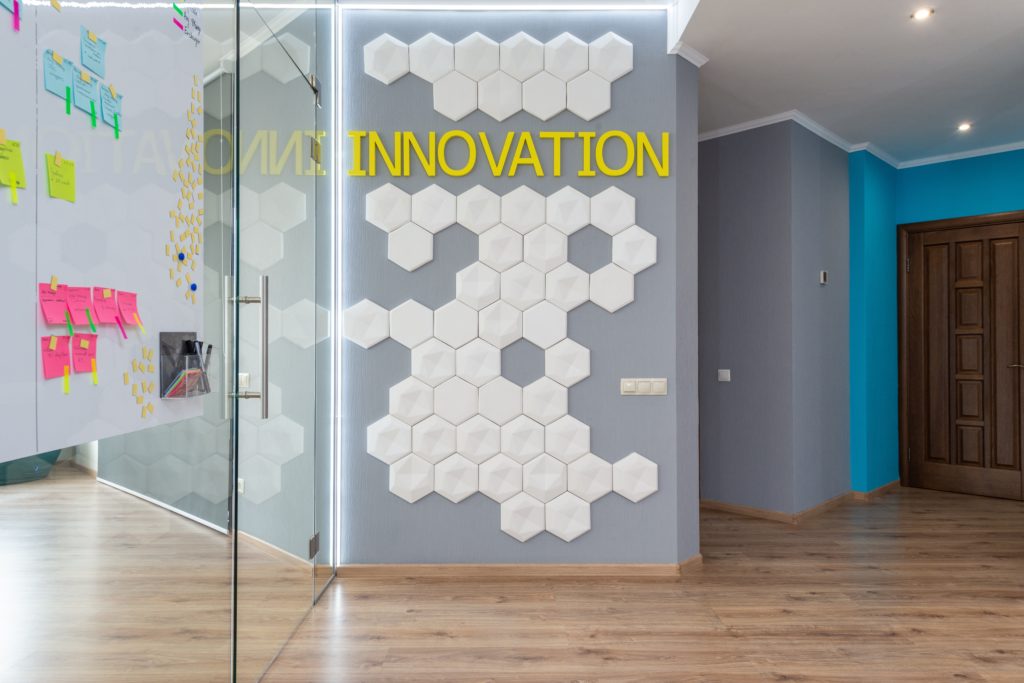Corporate culture can be difficult to identify and can feel like a square on a game of Business Buzzword Bingo. However, it is a piece of your business that you cannot afford to ignore. It is the glue that will keep your team together, and keep everyone on the same page.
While we may think of things like cool perks that Google gives its employees (like free lunches and haircuts), a company’s culture runs far deeper than that. And provides value that isn’t always at the forefront of these conversations.
Company culture is the personality of a business. It’s the way things are done, how relationships are maintained and is shaped by the people who work there. It’s the shared values, expectations, and attitudes that each individual within the organization can hold each other accountable to; regardless of hierarchy.
Great company culture is key to a happy and productive workforce. If your business is growing and you haven’t discovered and communicated to your company’s culture, it’s something that you should definitely consider.
In this article, we will define what company culture is and how you can go about discovering and strengthening yours.
Of course, it’s vital to remember that culture is not a one size fits all proposition. What works for one company might not work for another. At Support Panda, we’ve worked with so many different companies, and each one had a unique culture. That is what makes it exciting.

The 3 D’s of Company Culture
If you’re wondering what your company culture is and how to incorporate it into your business, look no further!
1. Discover your company culture
This is a big point – notice that I said “discover” and not “decide” or “dictate”. This is a trap that some businesses fall into when they try to dictate their company culture. The reality is that your company culture is already in place.
I often say it can’t be five executives in a room, talking out buzzwords and picking the most convenient ones. Because I promise, that does happen and I can also promise, it doesn’t work. Getting input from the whole team is crucial. The process needs to be inclusive for the results to have an impact.
The key to impact and authenticity is to discover what values you share as a company. What are the shared expectations amongst you and your employees? What are the values that are already shared and expected in the workplace?
Once you have data and feedback, take a step back and look for themes. Take some time to reflect on what those themes say about the organization. Determine what values you would like to continue to build upon, and what new ones you can introduce in a complementary fashion. In order to pinpoint that discrepancy, you will need to revisit your feedback and consistently ensure the direction you are moving towards is accurate and genuine.
2. Deliberately build policies and procedures
The next step is more than just a statement of values that hangs on your walls or an email to staff. For it to make an impact, it must be something that is integrated into each and every part of your operations. It must be an exciting announcement and something staff can lean on in conversations at all levels.
That means that it appears in your:
- policies
- procedures
- meetings
- feedback-loops
- training
- webpage
- job postings/descriptions
- communication
For example, if you would like a company culture around transparency, you can demonstrate that by having a clear compensation structure and making it visible to staff. Or you can make an anonymous AMA slack channel that allows staff to openly ask questions of senior leadership without management in-between. You can share long-term strategy with all levels of the company and bring in junior staff to brainstorm to encourage their input and perspective.
3. Demonstrate and hold each other accountable
So far, you know what your corporate culture is, what you want it to be, and you have included it in the framework of your operations. Now is the hardest part.
Demonstrating it. Walking the walk. Delivering on what you told your new hires to expect. And doing that consistently. As hard as it might be.
It’s important to note that this process is not a “one and done” exercise. As your company grows, you may find that those values that you shared in common need to be applied in different ways or need to change. This is especially the case if you are going through a growth phase and doubling or tripling your team.
What does a strong company culture look like?
We might picture company culture as team building activities on Fridays, cool perks and a snapshot of smiling employees. While that can be part of your company’s culture, it’s not the whole picture. And honestly, it isn’t even the most impactful way to view company culture.
Here’s how I define a strong company culture. Imagine knowing and understanding what your organization’s baseline should be, whether it is the process for completing a task or how communication should flow between colleagues. We can compare it to an orchestra – while everyone is playing different instruments, they are all playing the same song.
The benefit is that when something becomes misaligned, it is immediately noticeable. It’s like one instrument playing a wrong note. You can immediately notice where the issue is because it stands out so clearly.
I’ve worked with companies who have done the work, and it has done wonders for their team and productivity. Their values are so well-integrated and ingrained into their daily interactions that when it’s missing, it’s noticeable. In fact, their teams can call each other out (professionally, of course!), and remind each other of their shared priorities and goals by referring to values directly.
When there’s accountability and when your team can hold anyone (even you!) responsible for acting in a way that aligns with your company’s culture, that is the real value.
That is a strong company culture that is built to last.

How does Support Panda fit in?
Our role is not to determine your company’s culture. However, we can help you discover it. We can help you notice the areas where your intentions and your policies are misaligned and correct that.
We can create the structure and framework so that your employees have clear expectations about what your company culture is and aims to be, and what that looks like each and every day. We help you communicate what those values look like in action.
If you would like to learn more about how to build your company’s culture as you grow, let’s schedule a call.
